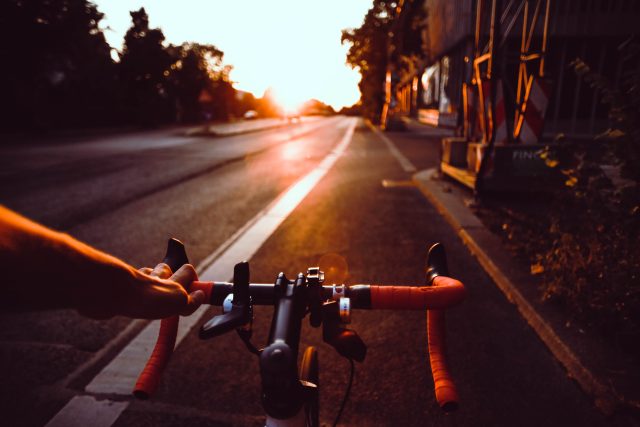
Gary Sprung, Michael Le Desma and Kurt Nordback
On behalf of Community Cycles
In his op-ed, (“Street Wise”, Nov. 30) Richard Kiefer opined that the best way to keep cycling safe on Iris Avenue is to enforce the current speed limit with speed cameras and widen the sidewalks but make no significant changes to the corridor. He asserted that the crash history on this corridor does not warrant more substantial changes. And he specifically opposed changes that would create a physical barrier between cyclists and cars.
At least Kiefer shares our goal of keeping cyclists safe and recognizes that car speeds are too fast for safety. But he fails to recognize that safety comes first and foremost from street design: Safe streets are ones that encourage and enforce safe behavior by drivers and other users. This generally means narrowed lane widths and other physical features.
Kiefer would instead widen the road. The city should “maximize the width of the right traffic lane and designate it for both cars and bicycles, without any obstructions or bike lane markings,” he wrote. This would cause car divers to go even faster.
His idea that bicyclists should share the lane with motorists hearkens back to a concept known as “vehicular cycling” that was briefly popular in the transportation world. The core principle was that bicyclists should act like and mix with motor vehicles, and that dedicated bicycle infrastructure was counterproductive. “Take the lane,” went the mantra.
The vehicular cycling movement was popular among a set of strong, confident bicyclists — many of them men — who were already comfortable mixing it up with cars. It was also popular with many transportation departments, to which it gave license to keep doing what they were doing: building streets for cars.
Lane widening and the mixing of fast cars with vulnerable bicyclists is a policy diametrically opposed to what should be our goal: safe, efficient, comfortable infrastructure for every bicyclist (as well as all other users), regardless of age, speed or experience level.
Kiefer argued that there have been relatively few crashes on Iris that killed or severely injured bicyclists. This is, thankfully, correct, but the current unfriendly design means few are willing to brave the street. Who wants to ride on that very narrow bike lane right next to cars going well above the 35 mph speed limit? Would you allow your 8-year-old to ride there? How about your grandparent?
Iris Avenue is a key part of CAN, the Core Arterial Network that City Council unanimously endorsed in 2022. CAN is an integrated set of streets that, when completed, will provide safe, efficient access for people walking and biking to parts of town where the current choices are indirect routes or personal peril.
As it exists today, Iris is a product of the long-prevalent attitude that streets should provide for maximum throughput of automobiles. Safety and inclusivity were clearly not the top priority, nor were they on most American streets and roads built in the past seven decades.
City of Boulder official policy now explicitly puts safety first. As stated on its website, “We believe no one should be killed or severely injured in traffic crashes on our streets. Moving about Boulder should be safe, no matter how you get around.” Amen to that.
Boulder also has an official goal of reducing our greenhouse gas emissions. Both statewide and nationally, driving is the top source of emissions. Safe, welcoming streets can encourage more of us to walk, bike or bus, lowering Boulder’s carbon footprint.
To turn Iris Avenue into a street for everyone, Community Cycles believes that a redesign should include:
- Protected bicycle infrastructure along the entire corridor from Broadway to 28th Street, including at intersections
- Wider sidewalks that are comfortable for all users
- Improved transit stops
- Steps to calm traffic on Iris, where the posted 35 mph limit is far too often exceeded.
- Improvements to make crossing Iris easier and safer for all travel modes
- Safer intersections with traffic signals that prioritize people walking
- Traffic calming on other nearby streets, such as Kalmia and Grape, which are too wide for safety
We urge the City to prioritize safety, expand opportunities for non-automobile travel, and reduce our fossil fuel emissions. Let’s make an Iris For All.
Community Cycles is a Boulder-based nonprofit dedicated to expanding access to cycling. Nordback, Le Desma and Sprung serve on Community Cycle’s Advocacy Committee
This opinion does not necessarily reflect the views of Boulder Weekly














